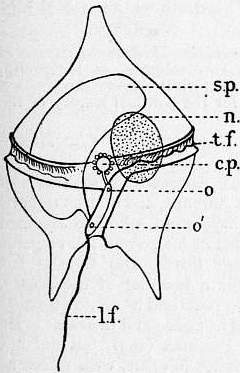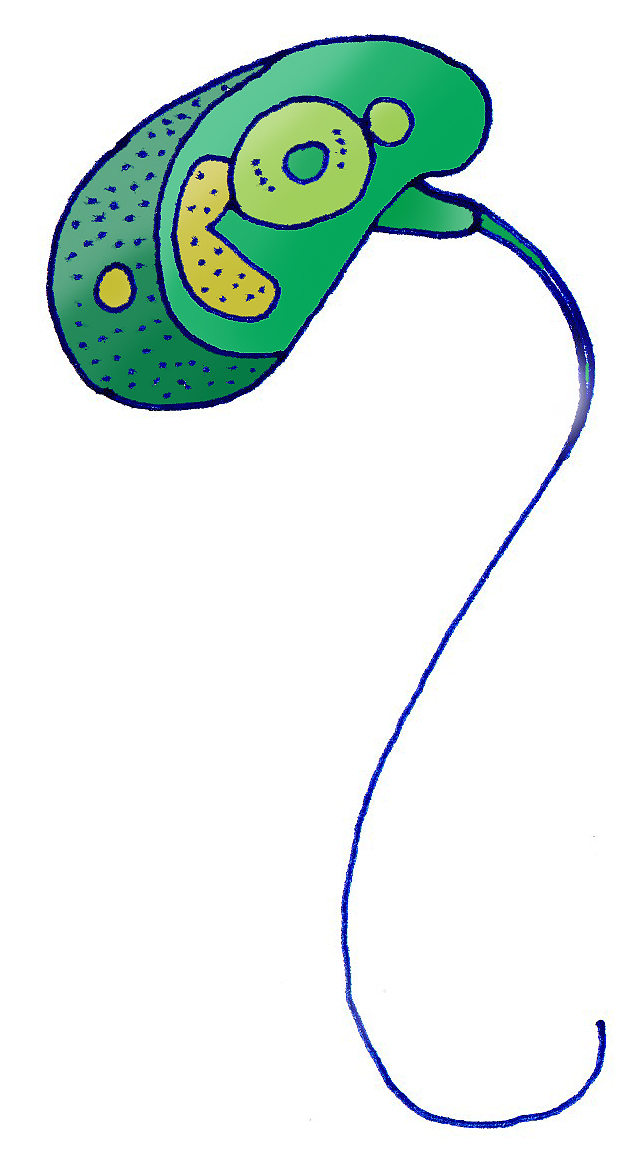|
Spumellaria
Spumellaria is an order of radiolarians in the class Polycystinea. They are ameboid protists appearing in abundance in the world's oceans, possessing a radially-symmetrical silica (opal) skeleton that has ensured their preservation in fossil records. They belong among the oldest Polycystine organisms, dating back to the lower Cambrian (ca. 515 million years). Historically, many concentric radiolarians have been included in the ''Spumellaria'' order based on the absence of the initial spicular system, an early-develop structure that, by its lacking, sets them apart from '' Entactinaria'' despite their similar morphology. Mendez Sandin. Diversity and Evolution of Nassellaria and Spumellaria (Radiolaria). Protistology. Sorbonne Université, 2019. English. Accessed at: https://tel.archives-ouvertes.fr/tel-03137926/file/ME ... [...More Info...] [...Related Items...] OR: [Wikipedia] [Google] [Baidu] |
Radiolarian
The Radiolaria, also called Radiozoa, are protozoa of diameter 0.1–0.2 mm that produce intricate mineral skeletons, typically with a central capsule dividing the cell into the inner and outer portions of endoplasm and ectoplasm. The elaborate mineral skeleton is usually made of silica. They are found as zooplankton throughout the global ocean. As zooplankton, radiolarians are primarily heterotrophic, but many have photosynthetic endosymbionts and are, therefore, considered mixotrophs. The skeletal remains of some types of radiolarians make up a large part of the cover of the ocean floor as siliceous ooze. Due to their rapid change as species and intricate skeletons, radiolarians represent an important diagnostic fossil found from the Cambrian onwards. Description Radiolarians have many needle-like pseudopods supported by bundles of microtubules, which aid in the radiolarian's buoyancy. The cell nucleus and most other organelles are in the endoplasm, while the ectopl ... [...More Info...] [...Related Items...] OR: [Wikipedia] [Google] [Baidu] |
Cavaspongiidae
''This article needs citations to reliable sources.'' Cavaspongiidae is a family of radiolarians in the order Spumellaria. External links Polycystines Radiolarian families {{Radiolarian-stub ... [...More Info...] [...Related Items...] OR: [Wikipedia] [Google] [Baidu] |
Spongodiscidae
Spongodiscidae is a family of radiolarians in the order Spumellaria. According to the original description by Ernst Haeckel Ernst Heinrich Philipp August Haeckel (; 16 February 1834 – 9 August 1919) was a German zoologist, naturalist, eugenicist, philosopher, physician, professor, marine biologist and artist. He discovered, described and named thousands of new sp ..., members of the family have a flat discoidal shell, in which a simple spherical central chamber is surrounded by an irregular spongy framework. References External links Polycystines Radiolarian families {{Radiolarian-stub ... [...More Info...] [...Related Items...] OR: [Wikipedia] [Google] [Baidu] |
Mixotrophs
A mixotroph is an organism that can use a mix of different sources of energy and carbon, instead of having a single trophic mode on the continuum from complete autotrophy at one end to heterotrophy at the other. It is estimated that mixotrophs comprise more than half of all microscopic plankton. There are two types of eukaryotic mixotrophs: those with their own chloroplasts, and those with endosymbionts—and those that acquire them through kleptoplasty or by enslaving the entire phototrophic cell. Possible combinations are photo- and chemotrophy, litho- and organotrophy ( osmotrophy, phagotrophy and myzocytosis), auto- and heterotrophy or other combinations of these. Mixotrophs can be either eukaryotic or prokaryotic. They can take advantage of different environmental conditions. If a trophic mode is obligate, then it is always necessary for sustaining growth and maintenance; if facultative, it can be used as a supplemental source. Some organisms have incomplete Calvin cy ... [...More Info...] [...Related Items...] OR: [Wikipedia] [Google] [Baidu] |
Dinoflagellates
The dinoflagellates ( Greek δῖνος ''dinos'' "whirling" and Latin ''flagellum'' "whip, scourge") are a monophyletic group of single-celled eukaryotes constituting the phylum Dinoflagellata and are usually considered algae. Dinoflagellates are mostly marine plankton, but they also are common in freshwater habitats. Their populations vary with sea surface temperature, salinity, and depth. Many dinoflagellates are photosynthetic, but a large fraction of these are in fact mixotrophic, combining photosynthesis with ingestion of prey ( phagotrophy and myzocytosis). In terms of number of species, dinoflagellates are one of the largest groups of marine eukaryotes, although substantially smaller than diatoms. Some species are endosymbionts of marine animals and play an important part in the biology of coral reefs. Other dinoflagellates are unpigmented predators on other protozoa, and a few forms are parasitic (for example, '' Oodinium'' and '' Pfiesteria''). Some dinoflage ... [...More Info...] [...Related Items...] OR: [Wikipedia] [Google] [Baidu] |
Cyanobacteria
Cyanobacteria (), also known as Cyanophyta, are a phylum of gram-negative bacteria that obtain energy via photosynthesis. The name ''cyanobacteria'' refers to their color (), which similarly forms the basis of cyanobacteria's common name, blue-green algae, although they are not usually scientifically classified as algae. They appear to have originated in a freshwater or terrestrial environment. Sericytochromatia, the proposed name of the paraphyletic and most basal group, is the ancestor of both the non-photosynthetic group Melainabacteria and the photosynthetic cyanobacteria, also called Oxyphotobacteria. Cyanobacteria use photosynthetic pigments, such as carotenoids, phycobilins, and various forms of chlorophyll, which absorb energy from light. Unlike heterotrophic prokaryotes, cyanobacteria have internal membranes. These are flattened sacs called thylakoids where photosynthesis is performed. Phototrophic eukaryotes such as green plants perform photosynthesis in plasti ... [...More Info...] [...Related Items...] OR: [Wikipedia] [Google] [Baidu] |
Prasinophytes
The prasinophytes are a group of unicellular green algae. Prasinophytes mainly include marine planktonic species, as well as some freshwater representatives.Sym, S. D. and Pienaar, R. N. 1993. The class Prasinophyceae. In Round, F. E. and Chapman, D. J. (eds) ''Progress in Phycological Research'', Vol. 9. Biopress Ltd., Bristol, pp. 281-376. The prasinophytes are morphologically diverse, including flagellates with one to eight flagella and non-motile (coccoid) unicells. The cells of many species are covered with organic body scales; others are naked. Well studied genera include ''Ostreococcus'', considered to be the smallest (ca. 0.95 μm) free-living eukaryote, and ''Micromonas'', both of which are found in marine waters worldwide. Prasinophytes have simple cellular structures, containing a single chloroplast and a single mitochondrion. The genomes are relatively small compared to other eukaryotes (about 12 Mbp for ''Ostreococcus'' and 21 Mbp for ''Micromonas''). At least one spe ... [...More Info...] [...Related Items...] OR: [Wikipedia] [Google] [Baidu] |
Haptophytes
The haptophytes, classified either as the Haptophyta, Haptophytina or Prymnesiophyta (named for '' Prymnesium''), are a clade of algae. The names Haptophyceae or Prymnesiophyceae are sometimes used instead. This ending implies classification at the class rank rather than as a division. Although the phylogenetics of this group has become much better understood in recent years, there remains some dispute over which rank is most appropriate. Characteristics The chloroplasts are pigmented similarly to those of the heterokonts, but the structure of the rest of the cell is different, so it may be that they are a separate line whose chloroplasts are derived from similar red algal endosymbionts. The cells typically have two slightly unequal flagella, both of which are smooth, and a unique organelle called a '' haptonema'', which is superficially similar to a flagellum but differs in the arrangement of microtubules and in its use. The name comes from the Greek ''hapsis'', touch, a ... [...More Info...] [...Related Items...] OR: [Wikipedia] [Google] [Baidu] |
Tintinnids
Tintinnids are ciliates of the choreotrich order Tintinnida, distinguished by vase-shaped shells, the name deriving from a Latin source meaning a small tinkling bell, that are called'' loricae'', which are mostly protein but may incorporate minute pieces of minerals. Fossil record Fossils resembling tintinnid loricas in shape and size, Calpionellids, appear as early as the Ordovician period but are formed of calcite and as no extant ciliate taxa forms calcite shells they are unlikely to be tintinnids and probably not ciliates at all. Fossils which can be reliably related to extant tintinnids (e.g. fossils of agglutinated lorica) are in the fossil record during the Jurassic but do not become abundant until the Cretaceous. Tintinnids are an important part of the fossil record because of the rarity with which most other ciliates become preserved under the conditions of the marine environment. The loricae of some tintinnids are easily preserved, giving them a relatively good fo ... [...More Info...] [...Related Items...] OR: [Wikipedia] [Google] [Baidu] |





